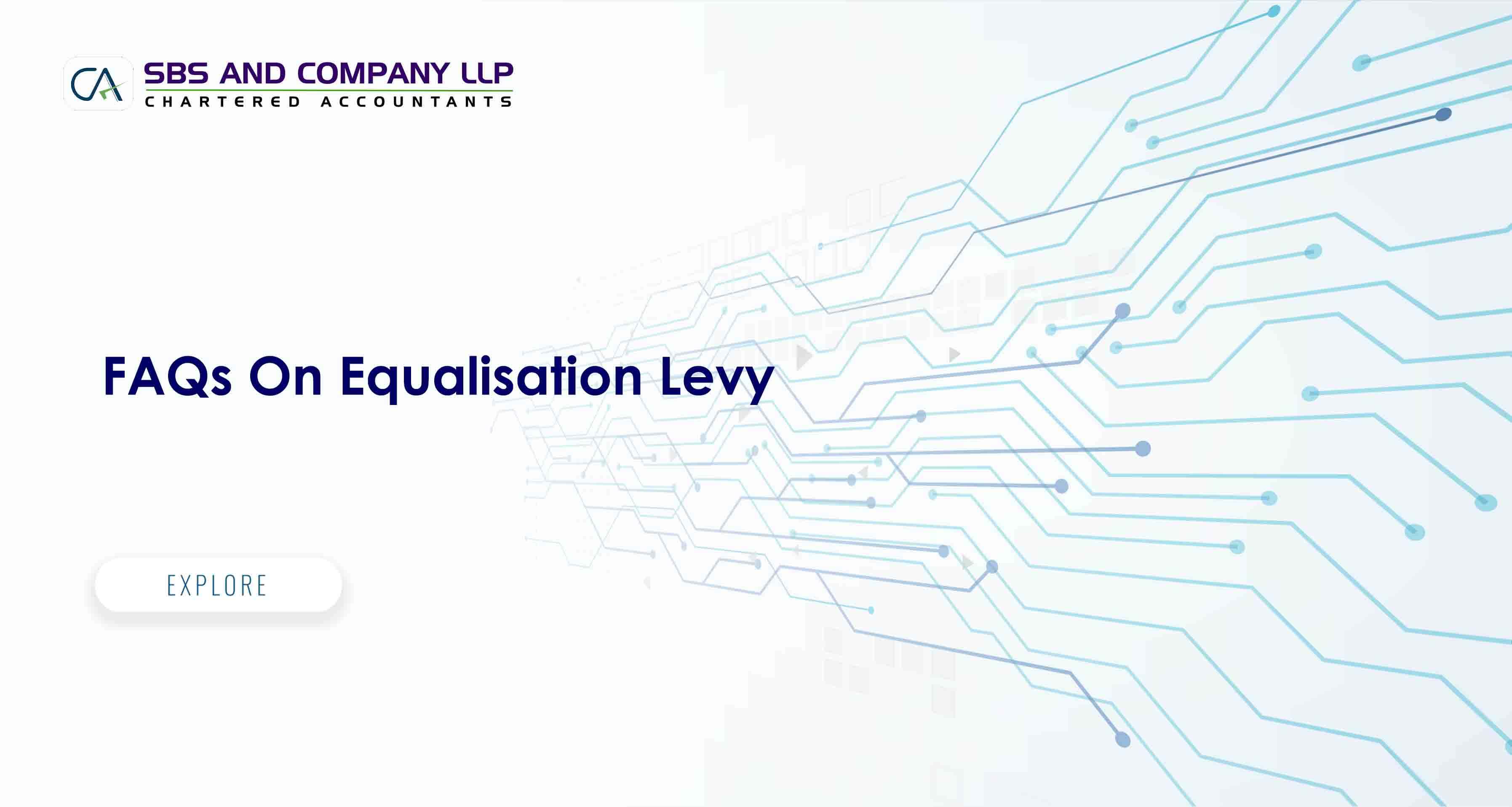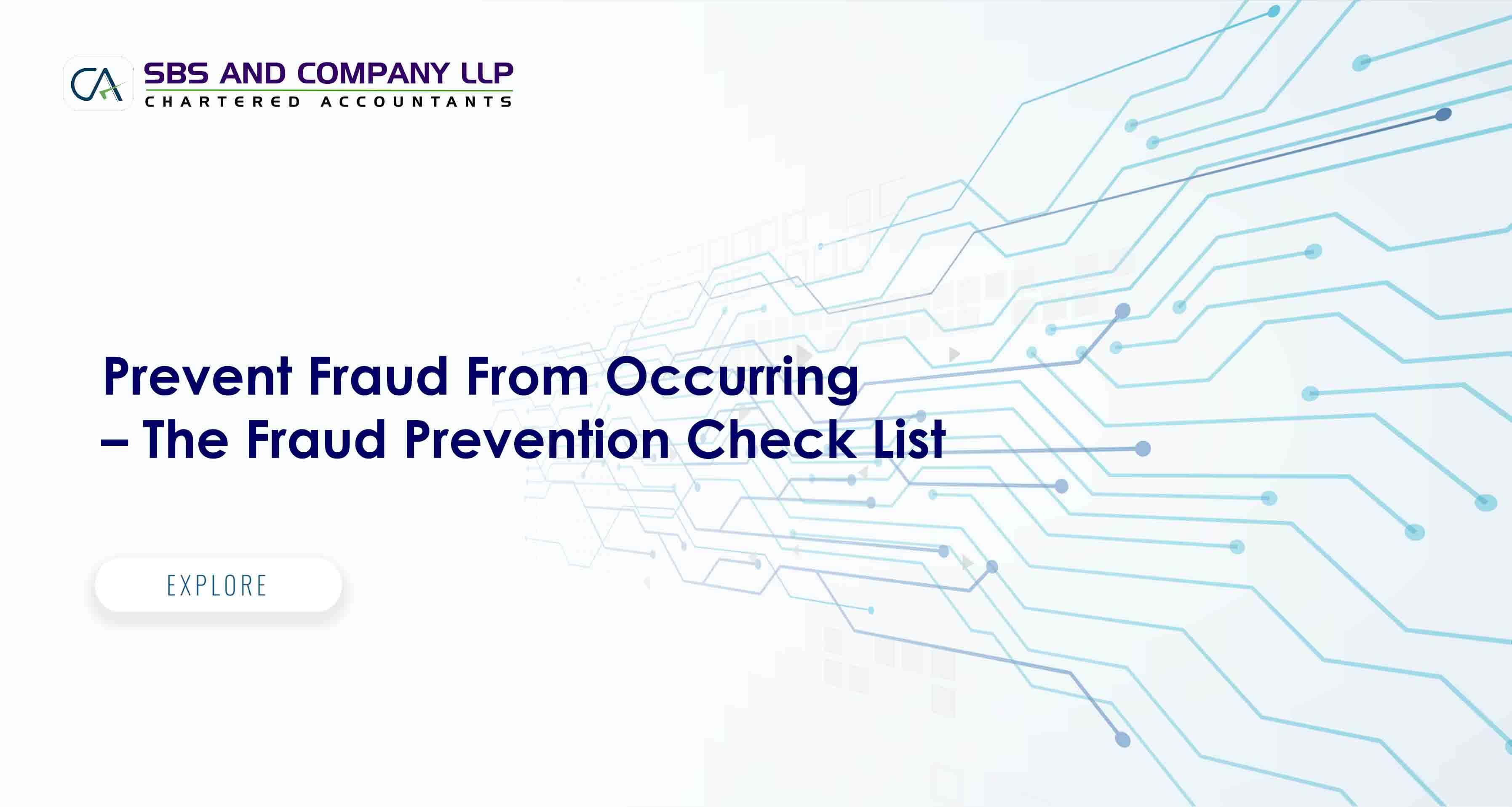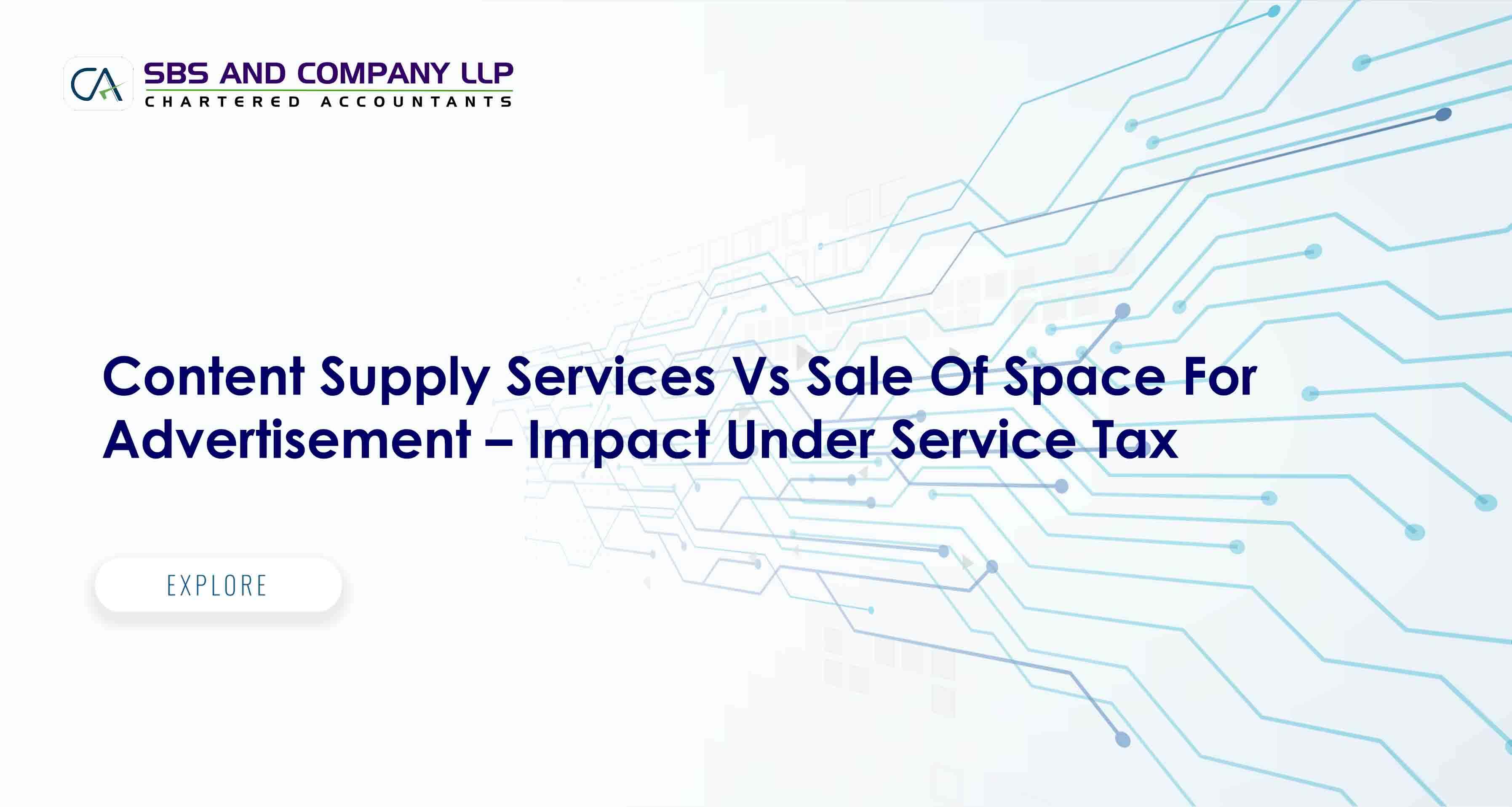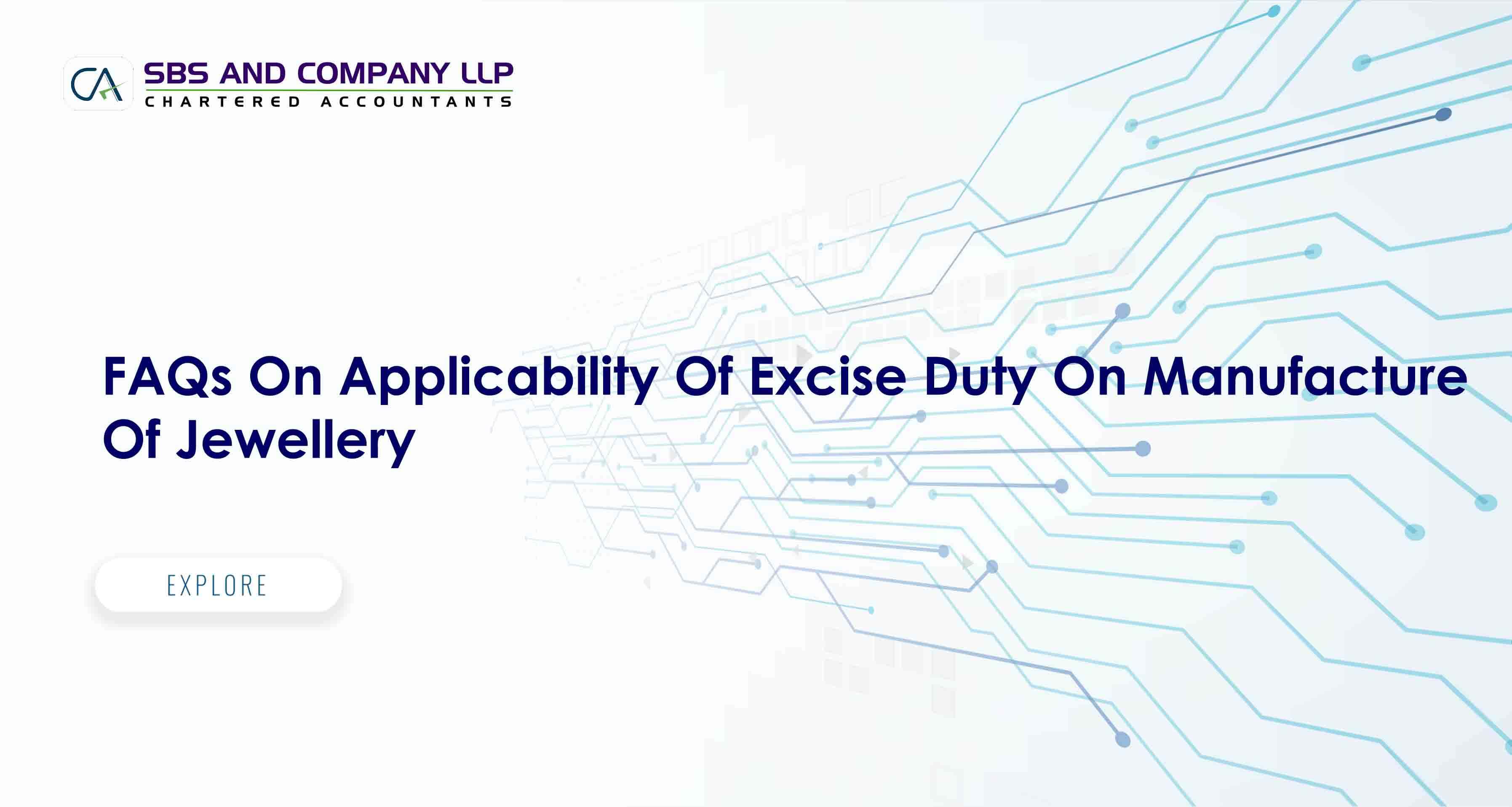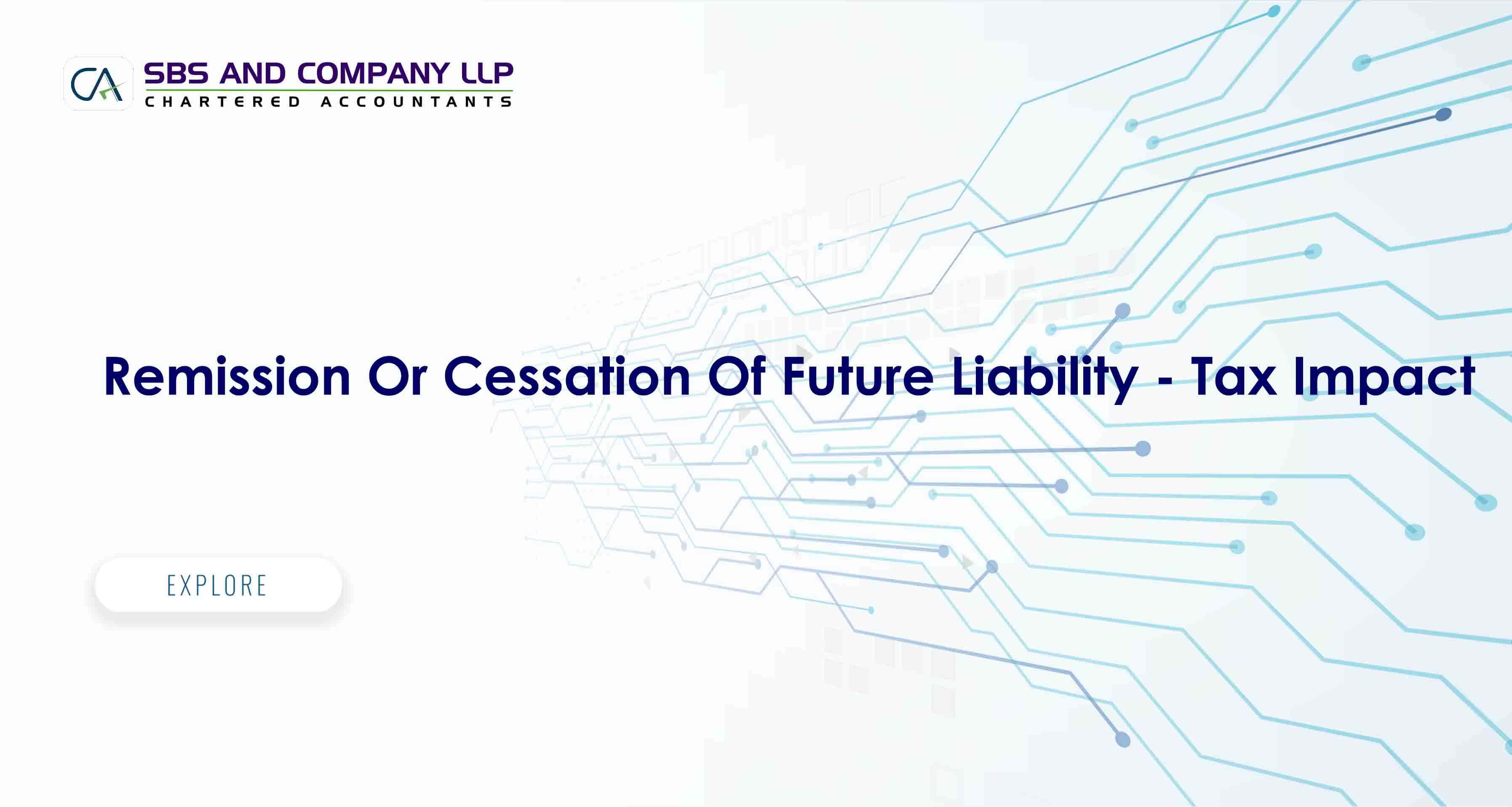Introduction:
The Finance Budget, 2016 has proposed excise duty levy on manufacture of both branded and unbranded Jewellery which is effective from 01.03.2016. Since then the entire Jewellery sector across India are under protest demanding the Central Government to roll back the same. It has been close to a month since the levy is brought into effect but the protests are being continued by the sector with unfettered perseverance.
On the other hand, in order to convince and pacify the sector, a committee has been constituted by Central Government to suggest the modalities for imposition of excise duty on Jewellery. A circular vide No. 1021/9/2016-CX dated 21.03.2016 has been issued in this regard. In the midst of these developments, the sector is making efforts to understand the duty applicability, the practical implications both from financial and compliance wise. Hence an effort is made to introduce the duty applicability, the valuation to be adopted and compliance to be undertaken in the form of the following FAQs.
- From when the levy of excise duty on manufacture of jewellery comes into effect?
The levy is effective from 01.03.2016. Notification No 12/2016-CE dated 01.03.2016 has substituted Entry 199 of Notification No 12/2012-CX dated 17.03.2012, thereby bringing the levy into effect.
- Is excise duty applicable for the jewellery being finished goods as on 29.02.2016?
Yes. Since the duty has come into effect from 01.03.2016, the finished goods lying in stock at the workshop as on 29.02.2016 shall attract excise duties when they are cleared on or after 01.03.2016. In case the finished goods are cleared by 29.02.2016 from workshop but lying as stock in showroom and are sold subsequently on or after 01.03.2016, then no excise duty is required to be paid on this stock lying at showroom as excise duty is applicable only when it is required to be paid at the time when the finished goods are removed from factory/workshop.
- Whet her all kinds of jewellery are covered under the excise ambit?
Excise duty is applicable to manufacture of all kinds of jewellery except articles made up with plain silver. However, if the silver articles are studded with diamond, ruby, emerald or sapphire the manufacture of same shall also be subjected to excise duty. Thus jewellery made of gold, platinum and other precious metals whether or not studded with diamond, emerald or sapphire and silver jewellery studded with diamond, emerald or sapphire attracts excise duty.
- Whet her only manufacture of branded jewellery is subjected to excise duty?
Excise duty is presently applicable on the manufacture of branded and unbranded jewellery. Hence, manufacture of all kinds of jewellery whether branded or unbranded shall attract excise duty except those specified in FAQ 3.
- What is the rate of excise duty on the manufacture of articles of jewellery?
Excise duty is payable either at 1% of the value of excisable goods or 12.5% of such value at the option of manufacturer. The option of paying excise duty at 1% comes with a condition that no credit of excise duty or additional customs duty paid on inputs and capital goods shall be availed. If the rate of excise duty is adopted as 12.5%, the credit of excise duty paid on inputs and capital goods can be availed.
- Whether the service tax paid on renting of premises and other eligible services by manufacturer can be availed as cenvat credit if the manufacturer is opting to pay excise duty @ 1%? Would the eligibility change if the excise duty is paid at 12.5%?
There is no restriction of availment of credit of service tax paid on input services for the manufacturer. Hence, he can avail the credit of service tax paid on input services even he is opting for discharge of excise duty @ 1%. However, credit is allowed to be taken only on those services which qualify as input services in light of the definition of ‘input service’ given under CENVAT Credit Rules, 2004. The answer remains same even if the manufacturer wishes to pay excise duty @ 12.5%.
- Is excise duty applicable on all class of manufactures? Is there any relaxation to small and medium category like goldsmith/artisan?
In terms of Rule 12AA of Central Excise Rules, 2002, only the principal manufacturer i.e. the person who is getting the jewellery manufactured through job worker is required to obtain registration and pay excise duty on the jewellery manufactured by job worker.
The phrase ‘job worker’ has been defined under the said rule. Accordingly, it means any person engaged in manufacturing of Jewellery on behalf and under the instructions of another person who supplies any inputs or goods so as to complete a part or whole of the process ultimately resulting in manufacture of jewellery. Thus a gold smith/artisan is said to be a jobworker when he engages in manufacture of jewellery for a retailer out of the inputs like gold, platinum etc supplied by such retailer.
Hence, the retailer who gets the jewellery manufactured through gold smith/artisan has to mandatorily obtain registration and discharge excise duty. Gold smith/artisan (job worker) is relieved from the excise formalities.
- Are there any other benefits/privileges available for Job worker under Rule 12AA of Central Excise Rules, 2002?
As per Rule 12 AA of Central Excise Rules, 2002, the job worker is not obliged to obtain registration with central excise authorities. Further, he is not required to maintain any books of accounts/records evidencing the process undertaken for the principal manufacturer. Hence, the job worker is free from all compliances pertaining to central excise.
| |
|
|
9. What are the obligations on principal manufacturer under Rule 12AA of Central Excise Rules, 2002?
The manufacturer should obtain registration, maintain accounts and pay excise duty on such manufacture undertaken by him either directly or through job worker. The responsibility in respect of the accountability of the goods sent to the job-worker premises shall be on manufacturer.
10. What are the benefits/privileges available for principal manufacturer under Rule 12 AA of Central Excise Rules, 2002?
|
|
|
|
The principal manufacturer has the following benefits/privileges
|
|
|
|
a. In case CENVAT Credit is availed by him on inputs, He can send inputs (goods) to the job-worker premises without reversal of credit subject to other conditions.
b. He can remove the jewellery manufactured in his factory to the job-worker for further manufactu ring without payment of duty.
c. He can remove the jewellery manufactured in the factory of job-worker directly to a customer’s place by paying appropriate excise duty without bringing the goods to his premises.
|
|
|
11. What is the procedure for regist ration with central excise authorities?
|
|
|
|
|
The manufacturer has to obtain central excise registration by filing an online application on www.aces.gov.in. The registration shall be granted within 2 working days.
|
|
|
12. I have heard that registration under central excise shall not be granted unless the premise is physically verified by the authorities. Does this hold good for the jewellery manufacturers also?
|
|
|
|
The manufacturers of articles of jewellery are exempted from physical verification. The registration shall be granted within 2 days once an application is made online. The necessary documents shall be sent to the central excise authorities vide post.
13. I am a retailer having manufacturing activity at multiple premises. In such a case, should I opt for separate registration for each premise or is there any option where I can get all premises registered as one unit?
|
|
|
The retailer has given an option of registering a single premise where the manufacturer has a centralised billing or accounting system in respect of jewellery manufactured or produced by different factories or premises. Further, such premise should have the accounts/records showing receipts of raw materials and finished excisable goods manufactured or received back from job workers are kept.
This place could be at the option of the manufacturer. It can be a workshop where all the details of jewellery manufactured including that of other workshops are maintained or a corporate office of the manufacturer where entire records are maintained or even a showroom of the manufacturer.
|
|
|
|
3 | Page
|
|
|
- Whether the premises of gold smiths/artisans shall also be required to be registered by Principal Manufacturer under Central Excise?
As discussed under FAQ 7, with respect to jewellery manufactured by job-workers (gold smith/artisan), the responsibility to maintain records and pay excise duty is on Principal Manufacturer. However this does not require him to register a job worker premises under Central Excise. Thus there is no need for Principal Manufacturer to register the premises of gold smiths/artisans.
- As a manufacturer of Jewellery, when do I need to assess the excise duty amount? What are the steps/measures to be taken at that point of time?
As discussed in FAQ 3, excise duty is on manufacture of Jewellery. The duty is to be calculated at 1% or 12.5% of the value of excisable goods. Excise duty payable is to be assessed at the time of removal of excisable goods from Factory. In case of Jewellery, it is to be assessed at the time of removal of Jewellery from workshop.
When the Jewellery is to be removed from workshop, the value of such Jewellery is to be arrived at and the corresponding excise duty shall be arrived at. The manner in which the value of Jewellery is to be arrived are discussed in subsequent FAQs.
Accordingly, an invoice under Central Excise is required to be issued. The invoice issued should contain Excise registration number of manufacturer, the details and address of Consignee, description of Jewellery, Excise tariff classification code of Jewellery (sub-heading 7113), value of Jewellery and the corresponding excise duty payable shall also be mentioned.
The jewellery shall always be removed from workshop to any other location only under the cover of an invoice as mentioned above. Such invoice shall be prepared in triplicate. Original copy is for Customer/Consignee, duplicate shall be issued to the transporter or any person mobilising the Jewellery from workshop to other location, triplicate copy shall be for the records of manufacturer.
- I am a manufacturer having a showroom and workshop at the same location. The jewellery manufactured at workshop is displayed in the showroom and sold to customers. What is the value on which excise duty is required to be paid?
As discussed in FAQ 15, excise duty payable is to be calculated on the basis of the value of excisable goods as prevailing at the time when goods are removed from the factory of a manufacturer. In case of Jewellery, each workshop of the Principal Manufacturer is treated as factory. In the instant case, both workshop and showroom are at the same location. Therefore registration can be obtained declaring workshop and showroom as single premise.If it is so, then the Jewellery manufactured is treated as removed from factory (workshop) only when Jewellery is sold to a customer.
In such case, value of excisable goods is based on the actual transaction value i.e. the price at which the jewellery sold to a customer is applicable. Thus in such cases, excise duty is payable on the actual price at which the jewellery is sold to customer.
- I am a manufacturer with several workshops and a showroom. The jewellery manufactured at workshop is moved to showroom for display and stocking and then sold to customers. How does a manufacturer arrive at value of Jewellery? When does excise duty is required to be paid by him?
As stated in FAQ 15, excise duty payable is to be calculated at the time of removal of jewellery from factory i.e. workshop. But no sale is happening at this point of time as the jewellery is merely removed to showroom. Whenever excisable goods are removed from Factory to a depot/showroom,the value of any excisable goods removed from Factory to depot/showroom shall be based on ‘Normal Transaction Value’ of such goods as prevailing at a depot/showroom.
Normal transaction value is price at which greatest quantity of similar goods are sold at the depot/showroom at the time nearest to the time of removal of excisable goods from Factory. Let us understand this concept with a practical example.
Example: On 10th March 2016,fivegold chains of a particular design are removed from workshop to showroom. On 9th March, 2016, the said gold chains are sold to three customers in the following manner.
|
Customer
|
Quantity
|
Price per gold chain (Rs.)
|
|
A
|
1
|
50,000
|
|
B
|
2
|
47,000 (Total 94,000)
|
|
C
|
3
|
45,000 (Total 1,35,000)
|
On 12th of April 2016, all the five gold chains are sold to customers at a price of Rs. 52,000 each.
As discussed above, ‘Normal Transaction Value’ is the price at which greatest quantity is sold at the showroom at the time when goods are removed from workshop. In the above example, gold chains are removed from workshop on 10th March 2016. At the time nearest to this point i.e. 9th March, 2016, gold chains of that particular design are sold to three customers. The highest quantity sold is three in case of customer ‘C’. The price at which those chains are sold to customer ‘C’ is the ‘Normal Transaction Value’ i.e. Rs 45,000 per chain.
As five chains are removed from workshop to Showroom, the value of these goods shall be valued at Rs 2,25,000 (45,000*5). Excise duty payable is to be calculated at 1% or 12.5% of this value. As stated in the above example, on 15thApril, 2016 these gold chains are sold to customers at a higher price of Rs. 52,000 each. This action will not increase the amount of excise duty payable on those gold chains.
On the other hand, it has been stated by CBEC vide Circular No. 1021/9/2016-CX dated 21.03.2016 that Principal Manufacturer can value the excisable goods on the basis of first sale invoice value. Under the existing Central Excise Law, there is no concept of valuing excisable goods on the basis of First sale invoice. Also, there is no explanation given as what is first sale invoice value, whether it is the price adopted for first invoice raised during a day or otherwise. What would be the position if there is no such sale happening at the showroom on the day the Jewellery is removed from workshop?
In the humble opinion of paper writers, Circular of CBEC can only clarify the legal position existing and it cannot lay down a law on its own in contrary to the existing law laid down by Parliament/Central Government. In view of this, we have totally ignored this concept of first sale invoice value.
- I am a manufacturer with showroom and workshop at different locations. I have received an order from a customer for sale of Jewellery of a particular design. The price agreed is Rs. 2,50,000/-. The Jewellery is manufactured at the workshop and then directly delivered to the customer.
In the instant case, Jewellery manufactured at the workshop is sold to customer at an agreed price of Rs. 2,50,000/-. As sale is happening at the time of removal of jewellery from workshop, the value of excisable goods can be considered at Rs. 2,50,000/-. Accordingly excise duty payable is to be calculated.
- I am a Principle Manufacturer getting my Jewellery manufactured through Job-worker (gold smith/ artisan). I am buying gold in the market and supplying to the Job-worker for manufacture of Jewellery. In consideration to the work undertaken by Job-worker, I am paying him certain agreed amount as job work charges. Is it sufficient to pay excise duty only on the job work charges or do I need to pay even on the value of gold supplied by me?
Excise duty is payable on the value of excisable goods manufactured. It will not take into consideration that whether entire raw material is borne either by the person manufacturing (Job-worker) the excisable goods or the person buying such manufactured goods (Principal Manufacturer). Duty is required to be paid eventually on the value that the finished goods fetch in the market.
Thus excise duty is payable on value of finished goods taking into consideration the value of gold supplied by Principle Manufacturer. The manner in which such value is to be determined is explained in subsequent FAQs.
- I am a Principle Manufacturer getting my Jewellery manufactured through Job-worker (gold smith/artisan). The jewellery manufactured by Job worker is removed to the showroom for display/stock purpose. It is subsequently sold to the customers. How doI arrive at value of Jewellery?
As discussed in FAQ10, the Principle Manufacturer has a benefit/privilege under the aforesaid Rule 12AA that he can obtain excisable goods manufactured by Job worker to his showroom without paying any excise duty. Accordingly, Jewellery can be brought to the showroom of Principle Manufacturer without paying any excise duty.
Excise duty in such case is to be calculated at the time when Jewellery brought to showroom is sold to a customer. Duty payable is calculated on the basis of the price at which the jewellery is sold to customer.
- I am a Principle Manufacturer getting my Jewellery manufactured through Job-worker (gold smith/artisan). I have agreed to sell particular Jewellery to a Customer at Rs 2,50,000/-. The jewellery manufactured by Job worker is directly sent to the customer. How do I arrive at the value of the Jewellery? Is there any special procedure to be followed in such cases?
As discussed in FAQ10, the Principle Manufacturer has a benefit/privilege under the aforesaid Rule 12AA that he can directly sell the Jewellery manufactured by Job-worker from Job-worker’s premises. Value of this Jewellery shall be at the price at which it is sold to customer that is Rs. 2,50, 000/-.
In case of direct removal from Job-worker’s place to customer’s location, the procedure prescribed is to be followed; accordingly, the Principal Manufacturer has to prepare an invoice in triplicate by filling in all details except for date and time of removal of Jewellery.
The original (Customer’s copy) and duplicate copies (transporter’s copy) of the invoices are sent to the Job-worker. The Job-worker shall enter the details as to date and time of removal of Jewellery to customers’ premises in original and duplicate copy of invoices. The said details are informed to the Principal Manufacturer for updating in triplicate copy of invoices. The Jewellery shall be removed to Customer’s location under duly filled in original and duplicate invoice copies.
- Apart from excise duty, sales tax/VAT is also applicable upon sale of manufactured Jewellery. Which of these duties/taxes is to be charged first? If excise duty is charged first, then whether VAT is chargeable on price including excise duty or otherwise?
Excise duty is chargeable upon manufacture on the value of excisable goods. It is clearly spelt out under the law that any CST/VAT collected from customers shall be excluded from the value of excisable goods. On the other hand, there is no corresponding specific provision under VAT laws to exclude excise duty collected from customers. Further State VAT laws and CST law are not integrated with Central Excise Law to facilitate any cross credits of VAT/CST and excise duty. In view of this reason, CST/VAT shall be calculated on the price of Jewellery including excise duty collected.
Accordingly, excise duty is to be charged first on the actual price (excluding all taxes) of the Jewellery. Subsequently VAT is to be charged on an amount equal to the sum of actual price of jewellery and excise duty charged.
- Is there any value based exemption (similar to turnover based exemption under VAT) for the principal manufacturer? Is the principal manufacturer is liable to pay excise duty from the first clearance in the year?
The principal manufacturer is exempted from excise duty for the value of clearances till Rs 6 Crores in the current year subject to a condition that the value of clearancesin the preceding financial year is less than Rs 12 Crores. Please note that the value based exemption is optional and not mandatory.
- I am a manufacturer and turnover for the Financial Year 2015-16is 11 Crores. What is the exemption available for me in the current Financial Year 2016-17?
As stated in the response to FAQ 23, the manufacturer shall be eligible for an exemption from payment of excise duty till Rs 6 Crores in the current financial year. Clearances post Rs 6 Crores shall be subjected to excise duty.
- I am a manufacturer and turnover for the Financial Year 2015-1 6 is 12.1 Crores. What is the exemption available for me in the current Financial Year 2016-17?
Since the turnover pertaining to preceding financial year has exceeded Rs 12 Crores, the manufacturer shall not be eligible for the exemption for the first Rs 6 Crores clearances. Entire clearances made in current Financial year 2016-17 are subjected to excise duty.
- I am a manufacturer and turnover for the Financial Year 2015-16 is 14 Crores. However, out of the said turnover, 3 crores pertaining to sale of jewellery which is not manufactured by me but purchased from another retailer. What is the exemption available for me in the current Financial Year 2016-17?
In order to eligible for exemption of Rs 6 Crores for the current financial year, the condition that has to be satisfied is that the preceding financial year turnover should not exceed Rs 12 Crores. Only sale of jewellery that was manufactured by retailer either on his own or through gold smith/artisan shall alone be considered for this purpose. The turnover for this purpose shall not include the turnover on which no excise duty is required to be paid for any reason. In the instant case Rs 3 crores worth jewellery traded is being purchased from another dealer and is not manufactured. Hence, the turnover of Rs 3 Crores stands excluded from the total turnover and since the balance turnover is Rs 11 Crores (14-3), which is less than Rs 12 Crores, the manufacturer shall be eligible for an exemption of Rs 6 Crores in the current financial year.
- As per FAQ 2, the sale of finished goods attracts excise duty on clearancein March, 2016, however the SSI exemption as detailed above is applicable on yearly basis, is there any value based exemption for the month of March, 2016?
Since the duty is applicable from 01.03.2016, an exemption has been provided for the clearances affected in the month of March, 2016. The manufacturer is exempted till clearances amounting to Rs 50 lakhs subject to a further condition that if the previous Financial year turnover i.e. of FY 2014-15 does not exceed Rs 12 Crores.
- I am manufacturer paying excise duty. Am I obliged to file any returns to the central excise authorities?
Yes, manufacturers of Jewellery are required to file periodical returns. In case a manufacturer has chosen the option of paying excise duty at 1% without CENVAT Credit on inputs and capital goods, then he is required to file a simple return in form ER-8, once for every quarter by 10th of immediately following month.
In case of a manufacturer who has chosen the option of paying excise duty at 12.5% by availing CENVAT Credit on inputs and capital goods, then he is required to file return in Form ER-1, once for every month by 10th of the immediately following month. In case if the turnover of the said manufacturer in the previous financial year does not exceed 12 crores, he can file return in Form ER-3 once for every quarter by 10th of the immediately following month.
- I am manufacturer who is charging excise duty upon removal of jewellery from workshop/showroom as discussed in previous FAQs. As duty is charged on these removals, I need to pay this amount to Central Government. What is the date on which I am supposed to pay such excise duty?
Generally, the manufacturer is liable to pay excise duty pertaining to the removals made during a month by 6th of succeeding month. In case of a manufacturer, whose turnover in previous financial year does not exceed Rs. 12 crores, he can pay excise duty once in a quarter. The due date in such cases is 6th of month following the end of a quarter.In case of March month or quarter ending with March month, duty is payable by 31st March itself.
Say for example, a Principle Manufacturer has cleared Jewellery worth of Rs. 4 Crores during the month June, 2016. The excise duty is charged at 1%. Thus total excise duty charged during the month is Rs 4 Lakhs. This amount of 4 lakhs is payable to the account of Central Government by 6th of July, 2016. However, it was clarified vide Circular 1021/9/2016-CX dated 21.03.2016 vide Para 6 that excise duty liability for the month of March 2016 can be discharged along with the payment of duty for the month of April 2016. Hence, the duty for the March and April 2016 shall be payable by 6th of May, 2016.
- Who is responsible for any loss or destruction of goods before clearances are made?
Excise duty is levied upon manufacture of Jewellery. Duty is payable even if the goods are not sold to customers and are eventually lost or destroyed before clearing from workshop. In such cases, the manufacturer is not absolved from payment of excise duty and he is required to pay excise duty on the value of such goods lost or destroyed.
However, the Central Excise law provides that if such loss or destruction is due to natural causes or unavoidable accidents then Principal Commissioner or Commissioner of Central Excise may waive the requirement to pay duty on such lost/destroyed goods. Thus excise duty is not required to be paid on lost or destroyed Jewellery only if the above mentioned officers permit so.
The above privilege of duty waiver by Principal Commissioner or Commissioner is applicable only in the event the loss or destruction happens in the Factory/workshop. If the loss or destruction happens during transit of Jewellery then no such duty waiver is applicable and excise duty has to be mandatorily paid in such cases.
- What are the records I have to maintain as a manufacturer for the purposes of central excise?
The manufacturer is not required to maintain any special records for the purposes of central excise. The manufacturer’s private records or records for State VAT authorities or records maintained for Bureau of Indian Standards shall suffice for the purposes of central excise.
However, under Central Excise Law, it is mandatory for all manufacturers to maintain a daily stock account indicating the opening balance quantity of finished goods on a particular day, the quantity manufactured during the day, the quantity cleared during the day and the closing balance by the end of the day. In order to meet the requirement of maintaining this record by jewellery manufacturers, it has been clarified that a simple private record maintained by them indicating the said details would be sufficient.
Disclaimer: The above FAQs are designed only for edifying the readers on the basics of excise duty applicability and the compliance to be undertaken considering the fact that duty applicability on Jewellery manufacturers is at nascent stage. The views expressed therein are on the basis of specified facts and assumptions. The information given above is not intended for any decision making. Neither the paper writers nor M/s SBS AND COMPANY LLP, Chartered Accountants shall take any responsibility for any decision taken on the basis of above information. It is advisable to consult a qualified professional before taking any decision on any of the above discussed subject matters.
For further queries, you may drop a mail to This email address is being protected from spambots. You need JavaScript enabled to view it. or This email address is being protected from spambots. You need JavaScript enabled to view it. or reach us @ 95-81-00-03-27 or 97-00-73-46-09.
This article is contributed by Partners of SBS and Company LLP – Chartered Accountant Company You can be reached at This email address is being protected from spambots. You need JavaScript enabled to view it.


